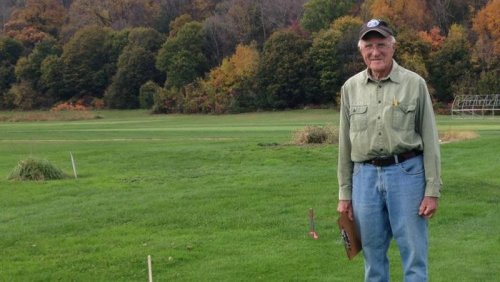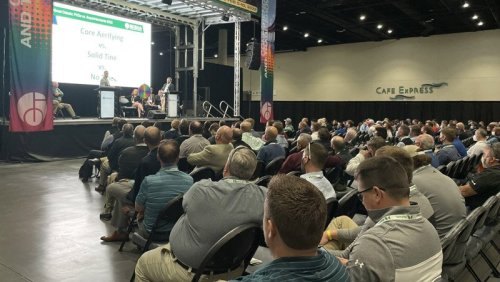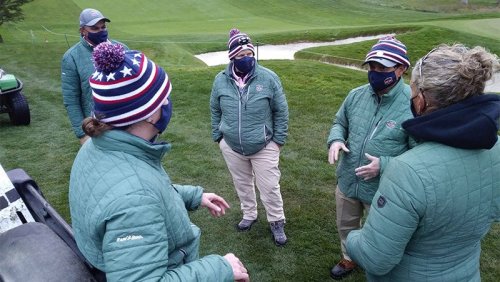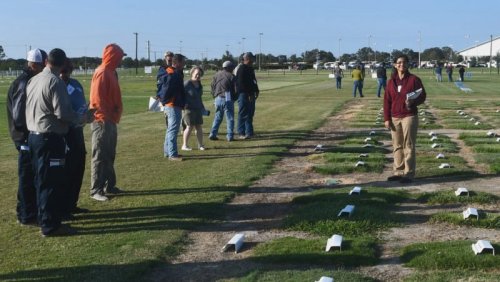
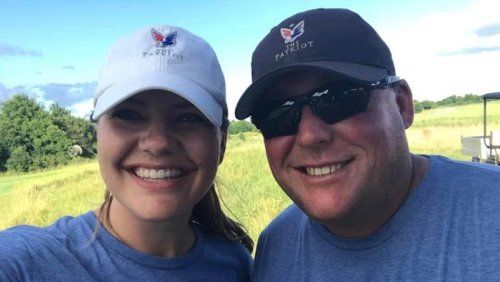
The grow-in superintendent at The Patriot Golf Club in Owasso, Oklahoma, Dobson died Feb. 21 when the recreational vehicle in which he was a passenger crashed in Jacksonville, Florida. Dobson and a group of friends from his hometown of Arkansas City, Kansas, were returning from the Daytona 500 when the crash occurred. He was 48.
"I loved him like a brother," said Russ Myers, superintendent at Southern Hills in Tulsa where Dobson was an assistant for 12 years before growing-in The Patriot course in 2010. "He was a grinder. He worked hard and liked to have fun. He had a lot of friends, but he never had to go to them; they came to him. He never lost a friend."
Other superintendents throughout the industry thought just as highly of Dobson, Myers said.
"He was hugely respected by his colleagues and was unbelievably talented," he said. "He was a nice guy, but he was no shrinking violet. He had a way of telling you he disagreed with you without offending you. He knew what he wanted.
"From the first scratch of the shovel in the ground he was so dedicated to The Patriot. He was as honest and loyal as the day is long."
A native of Arkansas City, Dobson was a graduate of the Kansas State University turf program. He started as an intern at Southern Hills in 1997 and was hired into a full-time role the following year. There, he prepped under the likes of Bob Randquist, John Szklinski and Myers before moving on to build The Patriot.
Four others in the RV at the time of the crash suffered non-life-threatening injuries, according to published reports. Also on the trip, but on a flight home at the time was Los Angeles Country Club director of golf courses and grounds Chris Wilson, who has been friends with Dobson since the two were in the fourth grade back in Kansas.
"I don't know if I am going to be able to get through this (conversation)," Wilson said.
"He could always make the worst situation better, and he made challenging times great. That's just who he was. He had such a positive impact on everyone he came in contact with."
Wilson and Dobson got their start in golf in high school when both worked at Arkansas City Country Club. And it was Dobson who recruited his lifelong friend to Southern Hills in 1998.
Wilson later went with Myers to Los Angeles Country Club as an assistant and was named head superintendent in 2016 when his boss returned to Southern Hills. He credits his lifelong friend with helping him forge his career path.
"He always worked hard and grinded it out," Wilson said. "You could just trust him as soon as you met him. He looked you in the eye, had a firm handshake and was easy to talk to. There was no bull****. He doesn't sugar coat anything."
Myers' relationship with Dobson transitioned from one of superintendent and assistant to one of trusted colleague.
"When I came to Southern Hills at the end of 2006, I inherited Chris Wilson and Jeremy Dobson and a third assistant, Roy Bradshaw, who is now our equipment manager. Chris and Jeremy were already good friends, and they were very good," Myers said. "It was apparent to me on Day 1 that I wasn't going to have to change much here. They were incredible people. They did not have to prove themselves to me, I had to prove myself to them.
"In 2007, we held the PGA Championship here, and over the next couple of years, the relationships we developed were lifelong bonds. It was a fraternity in a way. Now, every time I question something, or I'm worried if I'm missing something, Jeremy was always my first call. I trusted his judgment."
Said Wilson: "He was the best bentgrass grower I've ever seen. Bar none. He knew how to manage water and nutrients with seeing tests. He just had an eye for it."
Myers and Tim Moraghan of Aspire Golf have a long history. Through his relationship with Myers, Moraghan had gotten to know Dobson and eyed him for more than one potential career change opportunity.
"I always try to match the personality of the superintendent with the personality of the club so everyone benefits," Moraghan said. "He produced a great product, but that's not what matters now. This is someone in the prime of life and the prime of his career who is gone for whatever reason. When something like this happens, it's sad. Right now, I don't care about grass, or selfies, or hiring practices. It's just turf, and today that is insignificant."
- Read more...
- 1,952 views



